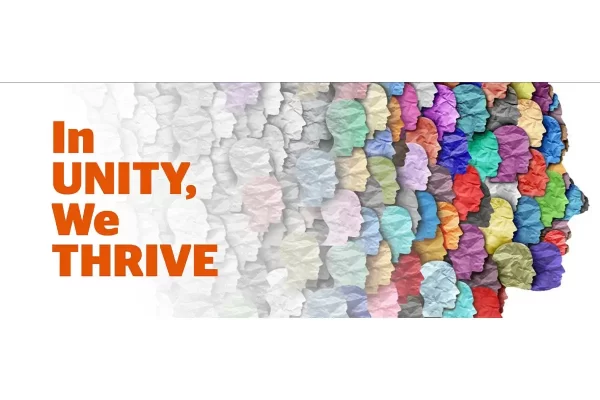by Emily Olson
Our industry is entirely dependent on transportation to get booths to and from show sites safely and on schedule. So we talked to a few of the major transportation companies about the issues they’re facing and how they’re embracing change in the future.
ECN: What were the biggest transportation issues you faced in 2022?
Jason Olinger (Yellow): According to the American Trucking Associations, the trucking industry will need one million new drivers over the next decade to replace those retiring or leaving the industry. Approximately 25% of the current truck driver pool is within ten years of retirement. The truck driver shortage is a long-term industry challenge, which is why Yellow has established 22 Yellow Driving Academies. The Academies are earn-while-you-learn, and Department of Labor registered apprenticeship programs. Yellow utilizes our seasoned drivers to train apprentices on their over-the-road training. In 2022 we graduated 1,000 new CDL drivers from this program.
Doug Shockley (Total Transportation Logistics): The single largest issue our industry faced in 2022 was capacity. Our Medical Device Manufacturing Customers were working at their highest level to satisfy the need of medical equipment, which was at its highest demand, during the pandemic. This increase in demand put a strain on the capacity in our fleets and kept our drivers busy and on the road constantly without many days off. During this time, we had an unprecedented increase in hiring new drivers, training them to provide White Glove services and we were able to mitigate any disrupt to our customers.
ECN: What issues do you anticipate in 2023 and how do you plan to address them given lessons learned in 2022?
JO: Keeping CDL operators from leaving the industry will remain a challenge given the increasing demand and rising pay rates for skilled labor. Investing in their ongoing development, highlighting career paths and earning potential, and building opportunities for them to engage in meaningful work beyond daily deliveries will be key. Yellow has certified nearly 1,000 frontline safety trainers who participate in safety committees, internal marketing events, external industry and customer events, and in training the next generation of drivers.
DS: Our three biggest issues are 1. Drivers 2. Fleet insurance 3. Healthcare. The transportation Industry and our niche of High Valued Products distribution has always had challenges in hiring and retaining quality drivers who are properly trained to handle and provide White Glove Services. Total Transportation Logistics maintains an active driver recruiting program as well as continuous driver training programs within our fleet. Rising insurance costs driven by frivolous lawsuits and the overall risk of fleet operations will continue to drive up transportation costs.
ECN: How do you manage client expectations and what extra value does your company add?
JO: We manage client expectations here at Yellow with transparency and honesty. We stand apart with nearly 100 years of experience being the original LTL carrier.
DS: TTL’s clients comprise manufacturers of High Valued Electronic Equipment, Medical Devices, Semi-Conductor equipment and others who compliment these industries. TTL provides a First in Class White Glove program that includes value added services of inside pick up or delivery, blanket wrapping, unpacking and debris removal. We also provide real-time product tracking and reporting services through our client portals. Our Customer Service team provides a single point of contact from the time of registration of a new order to confirmation of delivery. TTL’s concierge type service is targeted and then designed around each customer’s specific and specialized needs.
ECN: What technological advances on the horizon in trucking and transportation do you find most exciting and why?
JO: The trucking industry is currently experiencing significant investment in new safety and sustainability technologies. These technologies are already resulting in industry safety advances and emissions reductions. In 2023, there will be even more opportunities available for the industry to enhance safety and sustainability. However, the most important safety feature of a truck is the driver and continued emphasis on training is one of the best investments made by the trucking industry.
DS: Alternate fuel trucks will be the focus for the near horizon. Whether electric or fuel cell the push will be in the direction of some alternate fuel source.
ECN: How do you help seasoned drivers embrace new technology and automated systems?
JO: Yellow utilizes our own drivers who complete a safety training program. Once certified, they become instrumental in peer-to-peer training for existing and new technology – for example, placarding systems, electronic logging devices, video event recorder systems, and electronic vehicle inspection reports.
DS: Like many new ideas – the key to a successful adaptation is a slow and steady approach trying to avoid an avalanche of changes that overwhelm even the most tech savvy person. By adapting new upgrades and providing continuous training, our drivers are more easily able to absorb changes slowly than trying to implement new technology all at once.
ECN: How have supply chain disruptions impacted your business?
JO: Closely partnering with our customers so that we understand their businesses is one of the best ways to deal with the dynamic supply chain the industry has experienced over the past few years.
DS: The supply chain disruptions have put manufacturers in a precarious position of managing an abundance of some inventory while being paralyzed without the inventory of key components to complete a finished good. We provided storage solutions during this time for their overflow of materials and provided solutions of expedited deliveries for the finished goods to customers who were behind in receiving their products.
ECN: Did you integrate any new safe work practices in 2022? Do you plan to in 2023? How do you address driver safety?
JO: We continue to utilize Smith System for collision avoidance, an internal program (KIP) for injury prevention, and SafeAlign for improving culture and communication at both the leadership and frontline levels. We reinforce expectations by recognizing safety performance individually and as teams. Yellow’s Million Mile safety program has recognized nearly 2800 drivers who have achieved more than one million mile.
DS: We have increased our online training and installed Samsara tracking systems and cameras to monitor driver behavior and traffic interactions with our equipment.






























